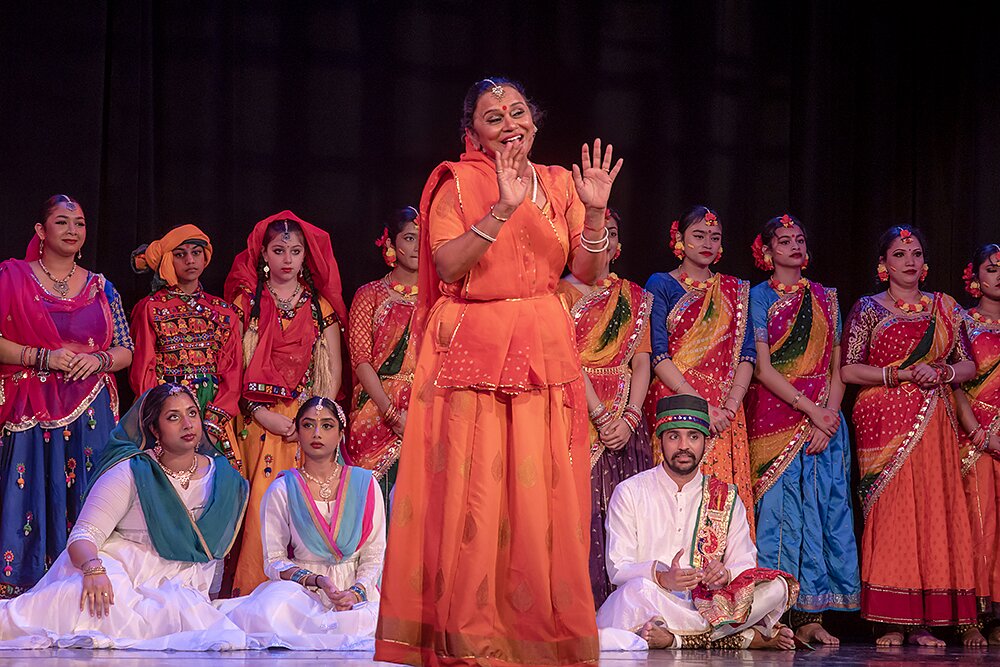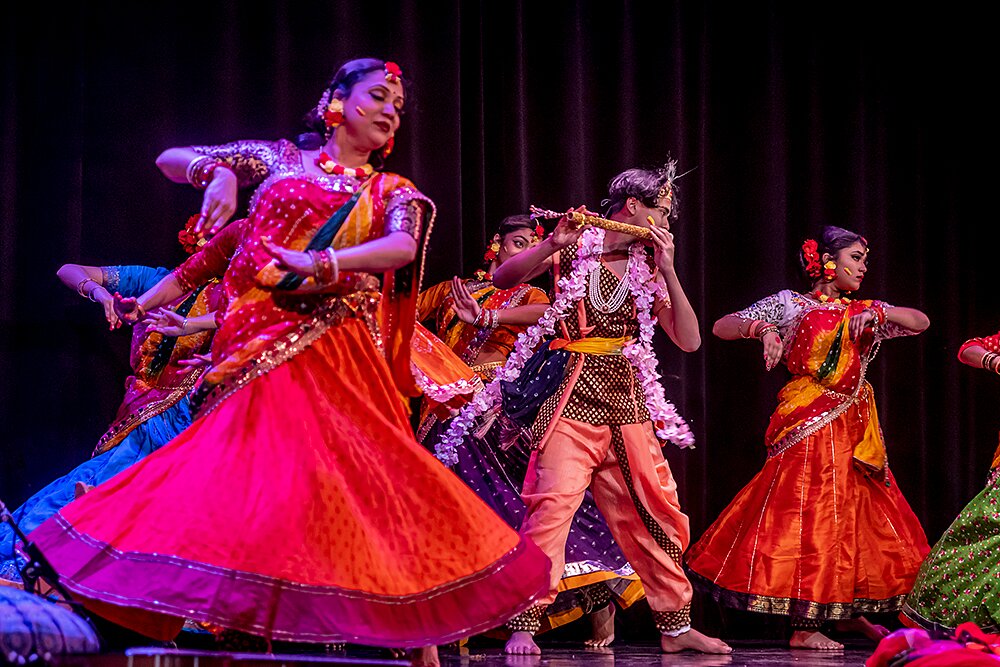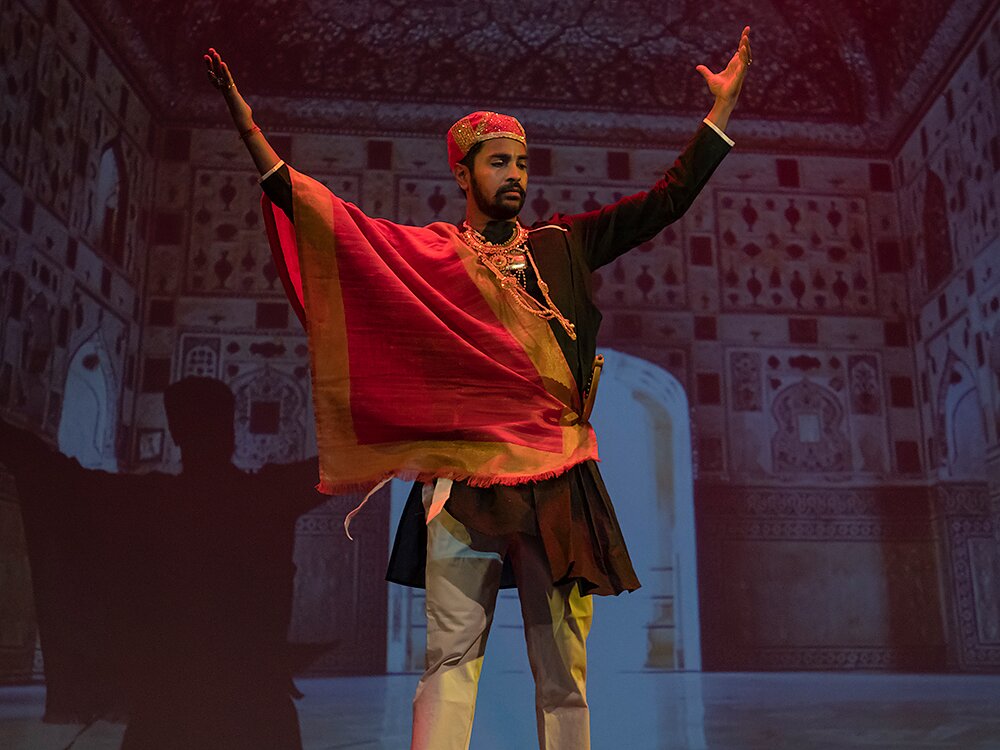Abha Roy on Bringing Kathak Dance to the World
For over 30 years, Abha Roy has brought the classical north Indian art of Kathak dance to audiences in New York City and beyond. Both a performer and teacher, Roy has traveled all over the world—from Guyana, Suriname, and Tobago to Canada, Russia, and Europe—as a representative of the Indian Council of Cultural Relations, championing the epic, millennia-old storytelling medium.
Here in the city, she is the founder and director of Srijan Dance Center, one of the leading Indian dance groups in the tri-state area, as well as the artistic director of Flushing Town Hall’s annual Diwali Festival.
This Saturday, April 6, Roy will be returning to Flushing Town Hall to curate their annual Holi Dance Concert. The colorful spring celebration will include folk and classical dance performances from throughout India with musical accompaniment by tabla master and singer Dr. Naren Budhakar, and sitar artist Abhik Mukherjee.
The Amp’s editor, Shannon Lee, spoke to Roy about the upcoming performance, Kathak dance, and her decades of teaching and performing Indian classical art forms.
Abha Roy: I started when I was about four or five years old in the beautiful city of Udaipur in Rajasthan, India. My parents were very interested and involved in Indian culture and art and I was eventually accepted into the National Institute of Kathak in New Delhi where I trained under the late Guru Kundan Lal Gangani who passed away in three years’ time. After that, I attained professional precision under Pt. Durgalal, specializing in Kathak Kendra.
From there, I participated in the Festival of India in the USSR in 1987 and went to South America for three years in 1989 where I taught with the Indian Council of Cultural Relations (ICCR). I was teaching there and in Guyana, Trinidad, and Barbados. I would also come to North America for performances. I returned to India for a while and finally came to New York in 1992 where I have been ever since.
I’ve performed all over the city—Lincoln Center, Brooklyn Academy of Music, colleges. Around 2000, I started Srijan Dance Center in Queens. Starting in 2020, we also started teaching in the Bronx after a good friend passed away from COVID-19. He was also trained in Kathak.
This is a shortcut way to tell you my journey.
AR: At university in India, I did my Master’s in geography and created an original map called “The Origin and History of Kathak Dance.” This was in 1982. At that time, less people traveled—we were able to count the number of dancers who had international opportunities on our fingers. There were very few institutions outside of India that showcased Kathak dance.
ICCR was sending dancers all over the world, particularly in places with large Indian diasporas; places like Guyana where the British took Indians, particularly from northern states, to work on the sugar cane plantations. Because of this, many people from these places are already connected to Kathak culture.
Because of this this, throughout the Americas, there were already a few institutions that supported Kathak dance. But in the ‘90s, we saw more dancers. Nowadays, we see a lot of festivals and dancers from all different styles and schools all over the world.
This is a storytelling dance form so we are seeing so many stories being told. Not just the old, classic stories but contemporary stories too! In the Flushing Town Hall performance, the poet is from New York City. We will be doing the same performance at public schools in the city, as well as for seniors.
This story is so important because in this city and around the world, there is not just a want but a need for peace and love. People need peace and love around them. The celebration of Holi is a celebration of colors and of spring. When we celebrate, we celebrate with whatever we have. If we grew something, we share it with our neighbors and community. We are sharing and bringing flowers. This is our goal for this particular performance—a message of peace and a story of happiness.
AR: I have taught at public schools from pre-K to 12th grade. It doesn’t matter who you are; they are all learning Kathak and other Indian folk dances. I curate the types of dances based on their social studies classes as a way for students to learn about India and particular regions, foods, languages, and cultures.
At the Flushing Town Hall celebration, there will be one middle school-aged student group from Queens performing. There will also be senior dancers from Srijan Dance Company.
We teach dancers from age five to over 65! And they are at all levels and styles—classical, semi-classical, folk. Every dance form is, in their own way, beautiful and tells their own stories.
Come to the performance and you will see! From A-Z, with wonderful musicians Dr. Naren Budhakar, and Abhik Mukherjee.



